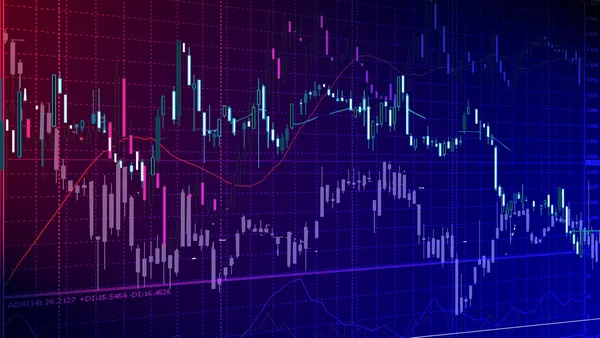 When it comes to interactive data visualization in JavaScript, one of the most critical features is the ability to zoom and pan within charts seamlessly. These functionalities are pivotal for users who need to navigate through extensive datasets and focus on specific data ranges.
When it comes to interactive data visualization in JavaScript, one of the most critical features is the ability to zoom and pan within charts seamlessly. These functionalities are pivotal for users who need to navigate through extensive datasets and focus on specific data ranges.
- Demo
- Phóng to
- Tải lại
- Cửa sổ mới
Miễn phí web hosting 1 năm đầu tại iPage
Nếu bạn vẫn còn đang tìm kiếm một nhà cung cấp hosting đáng tin cậy, tại sao không dành chút thời gian để thử với iPage, chỉ với không quá 40.000 VNĐ/tháng, nhưng bạn sẽ được khuyến mãi kèm với quà tặng trị giá trên 10.000.0000 VNĐ nếu thanh toán cho 24 tháng ~ 900.000 VNĐ?
Có trên 1 triệu khách hàng hiện tại của iPage đã & đang hài lòng với dịch vụ, tuyệt đối chắc chắn bạn cũng sẽ hài lòng giống họ! Quan trọng hơn, khi đăng ký sử dụng web hosting tại iPage thông qua sự giới thiệu của chúng tôi, bạn sẽ được hoàn trả lại toàn bộ số tiền bạn đã sử dụng để mua web hosting tại iPage. Wow, thật tuyệt vời! Bạn không phải tốn bất kì chi phí nào mà vẫn có thể sử dụng miễn phí web hosting chất lượng cao tại iPage trong 12 tháng đầu tiên. Chỉ cần nói chúng tôi biết tài khoản của bạn sau khi đăng ký.
Nếu muốn tìm hiểu thêm về ưu / nhược điểm của iPage, bạn hãy đọc đánh giá của ChọnHostViệt.com nhé!
In this article, we will learn about the advanced zooming and panning capabilities in JavaScript charts, drawing insights from a developer’s perspective to highlight how these features enhance user experience and data interaction.
The Importance of Zooming and Panning in Data Visualization

image by devexpress.com
In any application that deals with large datasets, the ability to zoom in and out and pan across the data is essential. These features allow users to:
- Focus on Details: Zooming in on specific areas of the chart helps users analyze finer details and make more precise observations.
- Understand Trends: Panning across the chart enables users to explore different sections of the dataset, helping them to identify trends and patterns that may not be apparent when viewing the entire dataset at once.
- Improve Usability: These interactive features make the chart more user-friendly, providing a dynamic way to interact with the data rather than a static display.
Implementing Zooming and Panning in JavaScript Charts
Implementing zooming and panning in JavaScript charts can be complex, requiring careful consideration of performance and responsiveness. A well-designed charting library should provide robust APIs that allow developers to add these functionalities with ease. Here’s how an advanced JavaScript charting library approaches this challenge:
Zooming Capabilities:
- Zoom to Rect: This allows users to select a rectangular region on the chart to zoom into. This method is intuitive and provides precise control over the zoom area.
- Mouse Wheel Zoom: Users can zoom in and out using the mouse wheel, which is a natural and convenient interaction for many users.
- Pinch to Zoom: For devices that can be touched, pinch movements can be used to zoom in and out. This is a common way for mobile users to connect with apps.
Panning Functionalities:
- Drag to Pan: Users can click and drag the chart to pan across the data. This interaction mimics the way users navigate through maps and other large canvases.
- Keyboard Navigation: Arrow keys can be used to pan the chart, providing an alternative to mouse interactions.
Dynamic Range Adjustment:
- Auto-Scaling: As users zoom and pan, the chart can automatically adjust its axes to fit the visible data, ensuring that the chart remains informative and well-scaled.
- Programmatic Control: Developers can set the visible range programmatically, allowing for custom zoom and pan behaviors based on specific application requirements.
Performance Considerations
Performance is a key concern when implementing zooming and panning, especially with large datasets. Advanced charting libraries leverage technologies such as WebGL and WebAssembly to ensure smooth interactions. These technologies allow the chart to offload rendering tasks to the GPU, providing a significant performance boost.
- WebGL: Utilizes the GPU for rendering, enabling high-performance graphics and smooth transitions during zooming and panning.
- WebAssembly: Enhances the performance of critical operations, ensuring that large datasets can be processed efficiently without compromising interactivity.
Enhancing User Experience with Annotations and Tooltips
Zooming and panning are often complemented by features such as annotations and tooltips. These additions provide contextual information that enhances the user experience:
- Annotations: Developers can place annotations on the chart at specific data points or regions, providing additional context or highlighting important information. Annotations can be interactive, allowing users to click and learn more about a particular data point.
- Tooltips: As users zoom and pan, tooltips can provide instant feedback about the data under the cursor, offering details without cluttering the chart with too much information.
Case Study: Financial and Stock Charts

image by depositphotos.com
Financial and stock charts are prime examples of where advanced zooming and panning capabilities are crucial. Traders and analysts often need to zoom into minute-by-minute data and then pan out to see longer-term trends.
- Candlestick Charts: These charts benefit greatly from zooming and panning, as they display detailed information about price movements over short periods.
- Linked Charts: Multiple charts can be linked together, so zooming or panning one chart synchronizes with others. This is particularly useful in financial applications where different metrics need to be compared simultaneously.
Real-Time Data and User Interaction
In applications dealing with real-time data, the ability to zoom and pan without disrupting the data flow is critical. Advanced charting libraries support real-time updates, ensuring that the chart remains responsive even as new data points are added. This is achieved through:
- Efficient Data Handling: The charting library must efficiently handle incoming data, updating the visible range dynamically while maintaining performance.
- Smooth Transitions: As new data comes in, transitions should be smooth to avoid jarring the user experience. This includes animating changes in zoom level or panning position.
Customizing the Zoom and Pan Experience
Customization is key to meeting the specific needs of different applications. Advanced charting libraries provide extensive customization options, allowing developers to tailor the zoom and pan experience:
- Custom Zoom Levels: Developers can define specific zoom levels that make sense for their data, ensuring that users can quickly access the most relevant views.
- Restricted Panning: In some applications, it may be necessary to restrict panning to certain areas of the chart. This can be easily implemented through customizable APIs.
- User Interface Integration: Zooming and panning controls can be integrated into the user interface, providing buttons or sliders that give users additional ways to interact with the chart.
Future Trends in Zooming and Panning
As technology evolves, so do the capabilities of charting libraries. Future trends in zooming and panning are likely to include:
- AI and Predictive Analytics: Integrating AI to predict and automatically zoom into areas of interest based on user behavior.
- Augmented Reality (AR): Using AR to provide immersive data exploration experiences where users can navigate through data in a 3D space.
- Voice Controls: Implementing voice controls for zooming and panning, making data interaction more accessible and hands-free.
In conclusion, advanced zooming and panning capabilities are essential for modern JavaScript charts, enhancing the user experience and enabling detailed data analysis. By leveraging technologies such as WebGL and WebAssembly, and providing extensive customization options, developers can create powerful and interactive data visualizations. As we look to the future, integrating AI, AR, and voice controls will further revolutionize how users interact with data, making these features even more indispensable.
Tác giả
 Thái Cao Phong theo chuyên ngành phát triển, lập trình web hơn 9 năm qua, đã & đang làm việc với PHP, JavaScript, CSS. Anh ấy là sáng lập viên của JavaScriptBank.com & 9BlogTips.com - cung cấp hàng nghìn mã nguồn JavaScript miễn phí, các thủ thuật lập trình web và các hướng dẫn blog hữu ích.
Thái Cao Phong theo chuyên ngành phát triển, lập trình web hơn 9 năm qua, đã & đang làm việc với PHP, JavaScript, CSS. Anh ấy là sáng lập viên của JavaScriptBank.com & 9BlogTips.com - cung cấp hàng nghìn mã nguồn JavaScript miễn phí, các thủ thuật lập trình web và các hướng dẫn blog hữu ích.
Hãy theo dõi anh ta tại twitter@js_bank hoặc kết nối qua facebook@jsbank nếu bạn muốn.
DanhNgon.info - Lời hay ý đẹp dành cho cuộc sống
ChonHostViet.com - Đánh giá hosting với gói ưu đãi miễn phí 1 năm đầu
- Lượt gửi (0)
- Mới
Tạo video doanh nghiệp của bạn bằng AI chỉ với giọng nói hoặc văn bản
chatGPTaz.com
Nói chuyện với ChatGPT bằng ngôn ngữ mẹ đẻ của bạn
Ứng dụng AI Video
Ứng dụng video AI MIỄN PHÍ đầu tiên của bạn
Deepfake Video
Deepfake AI Video Maker
Deepfake
Deepfake AI Video Maker
AI Deep Fake
Deepfake AI Video Maker
AIvidio
AI Video Mobile Solutions
AIvideos
AI Video Platform & Solutions
AIvedio
AI Video App Maker
Faceswap AI trực tuyến
Đổi mặt Video, Ảnh & GIF ngay lập tức với Công cụ AI mạnh mẽ - Faceswap AI Trực tuyến MIỄN PHÍ
Faceswap AI trực tuyến
Đổi mặt Video, Ảnh & GIF ngay lập tức với Công cụ AI mạnh mẽ - Faceswap AI Trực tuyến MIỄN PHÍ
Temu tặng $500 cho người dùng mới
Claim Free Temu $500 Credit via Affiliate & Influencer Program
Tín dụng quảng cáo TikTok miễn phí
Làm chủ quảng cáo TikTok cho hoạt động tiếp thị doanh nghiệp của bạn
Dall-E-OpenAI.com
Tự động tạo ra hình ảnh sáng tạo với AI
chatGPT4.win
Nói chuyện với ChatGPT bằng ngôn ngữ mẹ đẻ của bạn
Sản phẩm AI đầu tiên của Elon Musk - Grok/UN.com
Nói chuyện với Grok AI Chatbot bằng ngôn ngữ của bạn
Công cụ.win
Mở trung tâm công cụ miễn phí để mọi người sử dụng với hàng trăm công cụ
GateIO.gomymobi.com
Airdrop miễn phí để nhận, chia sẻ lên đến 150.000 đô la cho mỗi dự án
iPhoneKer.com
Tiết kiệm tới 630$ khi mua iPhone 16 mới
Mua Robot Tesla Optimus
Đặt mua Tesla Bot: Robot Optimus Gen 2 ngay hôm nay với giá dưới 20.000 đô la






 23/08/2024
23/08/2024 0
0
